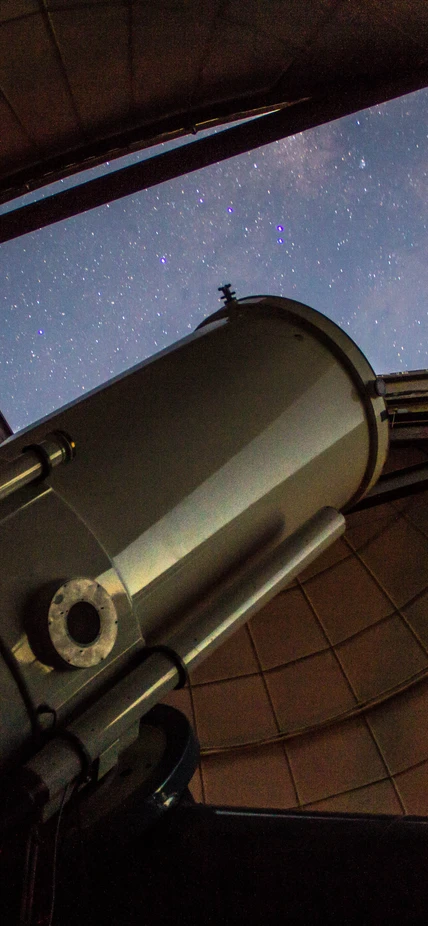
Photo of the Swope telescope by Consuelo González Ávila
Dear Friends,
I'm happy to share with you our first newsletter of 2018. The last year was an incredible one at The Observatories—certainly the most exciting in my 23 years.
In August, our scientists helped usher in a new era of astronomy when they detected the first electromagnetic counterpart to a gravitational wave event. The source of the event was the merger of two neutron stars. We believe such mergers are important because they likely produce some of the heaviest elements, such as gold, platinum, and uranium. This was without a doubt one of the most-exciting discoveries in astronomy in the last few decades. Already, Science, which published a suite of four papers about the Swope team’s discovery, named it the 2017 Breakthrough of the Year and Science News designated it the top result of 2017.
As with most topics in astronomy, Carnegie has a strong legacy in this field: the existence of neutron stars was first suggested in 1934 by Carnegie astronomer Walter Baade and his colleague Fritz Zwicky. The light detection of the neutron star merger was made with our Swope telescope at Las Campanas Observatory, which was the first telescope installed at our facility in Chile back in 1971, demonstrating that old telescopes can still play an important role when they are equipped with modern instruments.
While the neutron star collision may have been the highlight, there were many other important breakthroughs from our scientists in the past twelve months, including the discovery of the most-distant supermassive black hole ever found and the discovery of a "zombie" star that refuses die. Both results, as well as the neutron star merger work, involved major contributions by our postdoctoral fellows. As many of you know from my previous letters, we are particularly proud of our young scientists at The Observatories. I believe we have the strongest postdoc program in all of astronomy and this recent work supports that conviction.
While 2017 will go down as one of the most exciting in The Observatories’ 113-year history, we already have our eye on the future. This year, Carnegie staff member Juna Kollmeier took the lead in launching a groundbreaking all-sky spectroscopic survey known as SDSS-V, which will use both Carnegie's du Pont telescope at Las Campanas Observatory and the 2.5 m telescope at Apache Point Observatory in New Mexico to address a wide range of astrophysical questions from the formation and evolution of the Milky Way and other nearby galaxies to the supermassive black holes that reside at the centers of galaxies. You'll be hearing much more about this ambitious survey in the years to come. Meanwhile, progress continues to be made on the Giant Magellan Telescope, the next generation large telescope being constructed at Las Campanas. The project is still hoping to have first light early in the next decade.
Finally, some of you may know that Carnegie President Matthew Scott retired at the end of 2017. The Carnegie Board of Trustees has asked me and my colleague Yixian Zheng, Director of the Department of Embryology, to serve as interim co-presidents while a search is conducted for the institution's next leader. As two life-long Carnegie scientists, we were both thrilled to accept this new responsibility to help guide the institution in 2018. I will remain Director at The Observatories and will be dividing my time between Pasadena and Washington, DC. I am very much looking forward to learning more about the cutting-edge science happening at Carnegie's other departments.
Thank you as always for your support of Carnegie. Best wishes for a wonderful 2018.
Best,
John
Dr. John Mulchaey
Crawford H. Greenewalt Chair and Director
Carnegie Observatories
